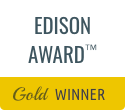Large Space Disinfection – Purchasing Tips:
The following suggestions will help you cut through the marketing hype and unsupported sales claims, when considering a “no touch” high-level disinfection purchase:
- D-Value: time to kill at least 90% of spores like C. difficile (weeds out the weak technology).
- Will the product's efficacy and outcomes be compromised by shadowed surfaces?
- Does the applied chemical leave any residue or salts behind (can be corrosive to metals)?
- Does the applied chemical leave heavy metal residue behind - ie: silver residue?
- How concentrated is the applied chemical? (the greater the concentration the greater the risk for corrosion and safety concerns)
- Efficacy: Total Elimination vs. Log Reduction for both MRSA and C. difficile spores (especially in light compromised shadowed areas) – Elimination of the targeted microorganism significantly reduces risk, especially for life-critical applications. Insufficient log reduction resulting in “growth” of bacteria can also result in their mutation and subsequent increased difficulty to kill later.
- Spore Kill: Can the disinfection system achieve “a total kill” for spores? - Many large area disinfectant systems cannot achieve a full kill / no growth result, for challenge organisms like Geobacillus stearothermophilus.
- MRSA Elimination: Can the disinfection system achieve “no growth” for MRSA? - Surprisingly, some large area disinfection systems can kill spores, but actually have a low Log reduction for MRSA.
- Distance: How well does the technology work at 10 / 15 / and 20 feet ? Especially with obstructing objects?
- Coverage: Are ALL surfaces treated in the room, especially around corners, under objects, and behind objects (no shadowing and line of site problems) ?
- Wetting: Is a film deposited, if so how wet are the surfaces, “actually“ ?
- Validation: How do you actually know the process worked each time as promised?
- Total Process Time: Start to Finish – A tied up room fails to make money.
- Total system cost: Consumables + Equipment costs? (ie: UV light bulbs are expensive)
- What is the largest volume that can be treated by one device and with multiple objects in that space?
- Will the disinfection technology decrease your risk of having your government reimbursements reduced?
- Cost of incomplete kill: If the technology leaves behind a viable bio burden, what will it cost you?
- Challenge: Make sure the test protocol(s), inoculated surface(s), and test material(s), are prepared according to AOAC guidelines, and the technology is challenged to at least a 6-Log standard, with attention given to ensure that a sufficient starting population size of each microorganism is tested.
- Realistic Test Protocol: Make sure that challenges are located in various locations in the tested space, including “out of the line of sight” from the disinfection device(s), under tables, under hand rails, behind chair backs, on the ceiling and wall(s) at one or more location(s) that are on the opposite side of the room furtherest from the disinfection device, in addition to multiple locations around corners that are in adjacent rooms or spaces. Use (preferably Geobacillus stearothermophilus ATCC # 12980, and/or Bacillus atrophaeus ATCC # 9372), and Methicillin-resistant Staphylococcus aureus (MRSA).
- Will the disinfection technology actually reduce the risk of being sued for negligence?

